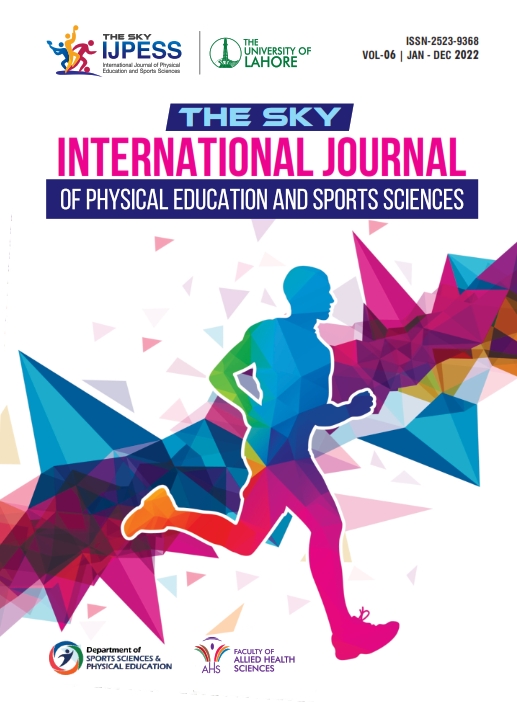EFFECTS OF AEROBIC TRAINING VERSUS CROSS-TRAINING UPON CARDIO-RESPIRATORY ENDURANCE OF MIDDLE DISTANCE RUNNERS
DOI:
https://doi.org/10.51846/the-sky.v6i0.2202Keywords:
Aerobic training, cross training, cardiorespiratory endurance & middle-distance runnersAbstract
The current study was conducted to examine the effects of aerobic training versus cross-training upon cardio-respiratory endurance of middle distance runners. A total of 60 male college’s badminton players between the age of 18-21 years participated in the study. Participants were divided into two groups, Experimental Group (EG) n=40 and Control Group (CG) n=20. The EG was further divided into Aerobic Training A and Cross Training B. EG was given prescribed training, while CG remained as usual. Data were collected two times; T1 pre-test and T2 post-test after eight weeks. T-test was applied to measure the statistically significant differences between pre- and post-test results. There is significant effect of cross training on cardiovascular fitness of middle distance runners aged 17 to 24 years. The effect of cross training was measured as a dominant training method for the cardiovascular fitness of middle distance runners as compare to aerobic training and control group. Before the treatments the groups were same in cardiovascular endurance but due to aerobic training and cross training the middle distance runners reduce their weight and BMI as well as improve their cardiovascular endurance after the treatment.
Downloads
Published
How to Cite
Issue
Section
License
Copyright (c) 2022 Zeeshan Habib, Muhammad Aslam Khan, Shahid Ali Khan

This work is licensed under a Creative Commons Attribution-ShareAlike 4.0 International License.
Authors retain copyright of their work and grant THE SKY-International Journal of Physical Education and Sports Sciences the right to publish it under a Creative Commons Attribution-ShareAlike 4.0 International License (CC BY-SA 4.0). This license permits sharing, adaptation, and redistribution of the work, provided proper attribution is given to the authors.
Authors may distribute the journal’s published version (e.g., in repositories, books, or other platforms) non-exclusively, with acknowledgment of its original publication here.
Authors are encouraged to share their work publicly (e.g., on personal websites or institutional repositories) to foster scholarly exchange.








